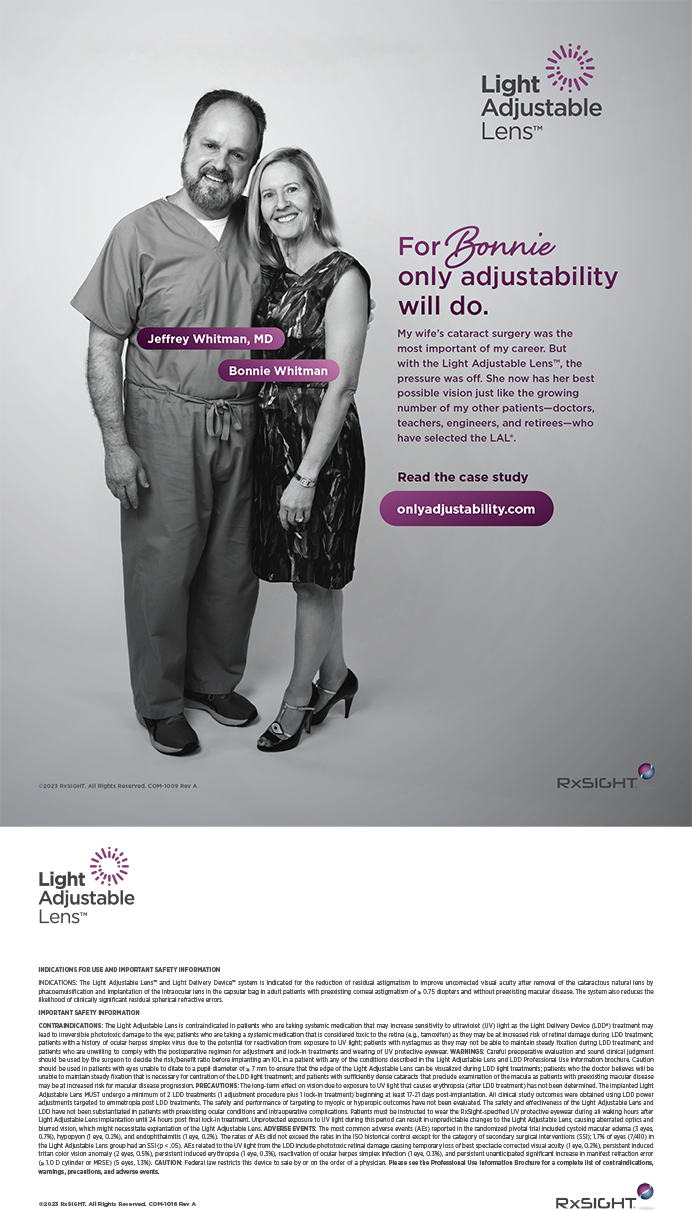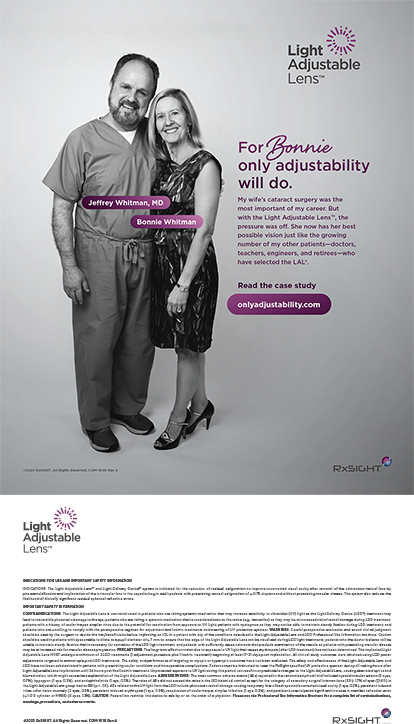
Keratoconus is a relatively rare corneal condition that is underdiagnosed.1 Visual symptoms of keratoconus were traditionally managed by primary care optometrists with rigid gas permeable and scleral lenses. Patients were referred to a cornea specialist when the disease reached an advanced stage. Despite the 2016 FDA approval of the first CXL system to treat patients with progressive keratoconus (now known as iLink, Glaukos), some ophthalmologists have refrained from offering the procedure because of episodic payor denials, a lack of practice resources required to file reimbursable claims, and other practice management issues.
AT A GLANCE
- Third-party payor reimbursement for CXL is robust, and there is no global period for post-CXL care.
- Effective scheduling and staff deployment are essential to optimize practice efficiency.
Today, CXL is a financially viable procedure that is effective at slowing or arresting the progression of keratoconus. It can be an important service for a healthy anterior segment practice, and, more broadly, providing keratoconus care can increase a practice’s value and strengthen its optometric referral networks.
REIMBURSEMENT
When performed with iLink, CXL is a covered service for approximately 95% of commercially insured patients with progressive keratoconus. Reimbursement rates vary by region and plan but are generally robust. CXL involves both a procedure code (Current Procedural Terminology [CPT] code 0402T) and a drug code (Healthcare Common Procedure Coding System code J2787) in addition to associated exam and diagnostic fees.
Average reimbursement can be improved by keeping detailed records, advocating for patients when a plan underpays, and renegotiating rates with key payors (click here to read an article on third-party payor contract negotiations from the February 2022 issue of CRST).
The photosensitizing solutions Photrexa and Photrexa Viscous (both from Glaukos) are reimbursed separately using Healthcare Common Procedure Coding System code J2787. Payor reimbursement has kept pace with the price of these solutions over the past few years. Payments from each payor should be monitored to ensure that J codes are being fairly and consistently reimbursed. As an alternative to the typical buy-and-bill process described here, some practices work with specialty pharmacies that also offer these approved solutions.
Unlike most surgical procedures, CXL does not have a global period. When managing a patient with keratoconus, a practice can expect to perform pre- and posttreatment exams (eg, CPT codes 92012 and 99212) as well as diagnostic testing. Topography (CPT 92025), for example, is performed before CXL and at various follow-up visits between 1 and 12 months to monitor patients for changes.
Depending on when the transfer of care occurs, post-CXL follow-up and associated reimbursement could be available to both the ophthalmology and the optometric practice. Many practices have strengthened their collaborative relationships by returning patients to their referring optometrists for most of their posttreatment care, including contact lens fitting. When this is handled well, optometric partners may begin to refer more patients with keratoconus for evaluation because they see the positive clinical results of CXL and do not fear losing their patients by referring them.
Glaukos offers support to practices facing challenges with payor reimbursement for CXL and programs to help uninsured or underinsured patients gain access to care. The company’s iPath 360 program provides authorization and preservice guidance, general billing and coding recommendations, and appeals and support for low-paid or denied claims. Its patient assistance program, the iLink Copay Savings Program, is open to anyone with commercial insurance coverage and is intended to support patients treated with the FDA-approved CXL procedure. Enrollees may receive up to $200 toward their nonreimbursable expenses.
HOW TO INTEGRATE CXL INTO YOUR PRACTICE
Reimbursement is only one part of the picture when it comes to financial viability. Practices must ensure that they are using internal resources such as physician and technician time and office space efficiently. With a focused, systematic approach, practices can begin reaping the benefits of incorporating CXL into the schedule.
Time management is a key element in the successful integration of CXL. The procedure takes approximately 90 minutes, so it is important for technicians to be well informed and prepared. It is also important for the doctor, the appointed technician, and the head administrator to collaborate on optimal patient flow practice(s).
The successful integration of a medical procedure is achieved by following the same exact process every time. Some steps, however, may require adjustment to meet the unique needs of each practice and patient.
No. 1: Educate your OD referral network. Explain what signs and symptoms to look for and when to refer patients with suspected keratoconus. Invite optometrists to observe a CXL procedure. Discuss and reach an agreement on the handoff process between the OD and MD so there aren’t any surprises.
No. 2: Look for candidates. Mine your patient database to identify individuals with keratoconus in your practice. Additionally, consider adopting a genetic diagnostic tool (AvaGen, Avellino) to determine the genetic risk of developing keratoconus in undiagnosed patients. Identifying patients at genetic risk of keratoconus can allow appropriate monitoring for its development and, potentially, earlier sight-saving intervention with CXL to be performed.2
No. 3: Identify challenges. Gain a better understanding of any challenges with the scheduling and reimbursement processes for CXL through a collaboration between the doctor, administrator, appointed technician, counselor(s), revenue cycle team, and relevant sales representatives.
No. 4: Tick the boxes. Ensure that all requirements such as those for documentation and preauthorization are being met.
No. 5: Review the schedule and figure out how to maximize patient flow and efficiency. As noted earlier, a CXL visit should last only about 90 minutes. To make the best use of the physician’s time, many practices find it helpful to start each day with a CXL procedure rather than cluster all CXL procedures on a single day of the week.
No. 6: Inform patients. Access marketing and educational materials to share with patients, promote your practice’s expertise in keratoconus treatment, and showcase CXL on relevant social media pages.
conclusion
The six-step approach outlined here will look slightly different for each practice, but following this formula can help you to realize greater economic potential with CXL. Combine these steps with close attention to reimbursement practices from your payor mix, and CXL can be a financially sound offering for the practice as well as a sight-saver for patients.
1. Kennedy RH, Bourne WM, Dyer JA. A 48-year clinical and epidemiologic study of keratoconus. Am J Ophthalmol. 1986;101(3):267-273.
2. Thompson V. Quantifying the risk and presence of keratoconus and other corneal genetic disorders. Cataract & Refractive Surgery Today. 2021;21:34-35.




